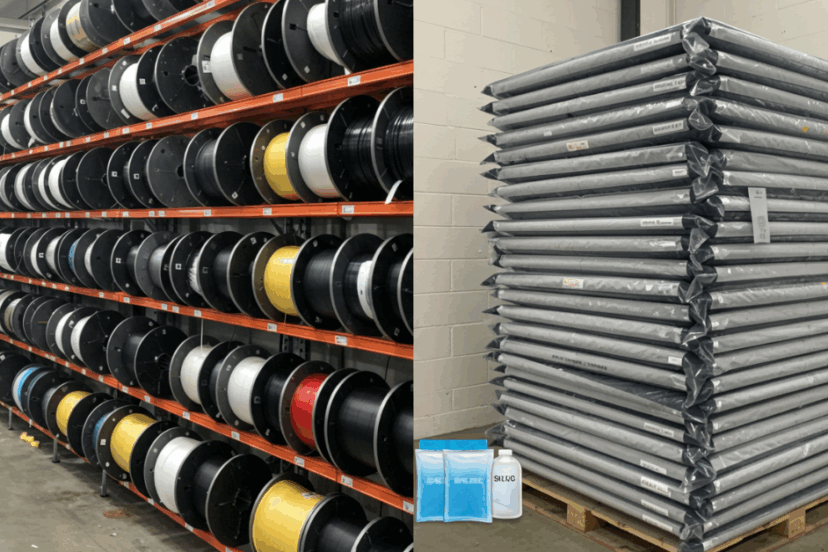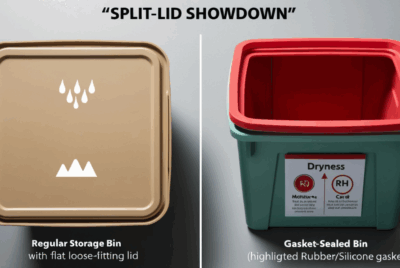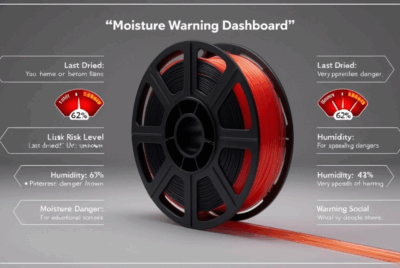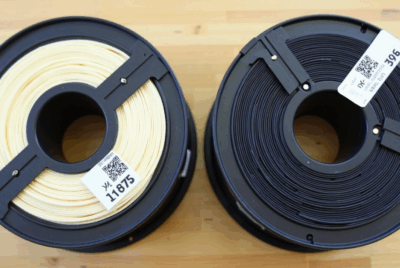Is It Better to Store Filament Vertically or Horizontally?
1. The Spool Storage Debate
Should you store your 3D printer filament standing up like records on a shelf?
Or lay them flat like pancakes in a stack?
It’s a surprisingly common debate in maker communities.
Let’s break down the real differences between vertical and horizontal storage, and what actually matters more.
2. Why Orientation Even Matters in Filament Storage
Some users swear vertical is the only “safe” option. Others claim horizontal saves space and works just fine.
But here’s the truth:
Filament orientation can affect your spools—but only slightly. What matters most? Humidity and handling.
Still, let’s look at the pros and cons of each setup.
3. How Filament Is Wound—and Why It Affects Storage
Filament is wound onto spools under tension during manufacturing.
If stored improperly or unevenly:
- Tension can deform the filament
- Spools can warp slightly
- Lower layers in a horizontal stack may flatten
So while both orientations can work, storage environment and pressure are the real culprits to watch.
4. Common Myths About Vertical vs. Horizontal Storage
Let’s bust a few myths:
| Myth | Reality |
|---|---|
| Vertical storage prevents tangling | Tangling happens from bad handling, not storage |
| Horizontal storage flattens filament | Only true with weight or heat |
| Orientation affects moisture absorption | False—exposure to air does that |
| You must store spools label-up | Labeling helps—but not required for safety |
5. Pros of Storing Filament Vertically
✅ Takes less floor or shelf space
✅ Makes color and type selection easier
✅ Avoids heavy stacking (no pressure on lower spools)
✅ Easy to label or color-code visible edges
✅ Better airflow around spools in open racks
Great for:
- Open racks
- Display shelving
- Quick-grab active spools
6. Cons of Vertical Storage
⚠️ Less stable unless in tight racks
⚠️ Can tip over if not secured
⚠️ Some bins or boxes don’t support it
⚠️ Doesn’t work as well in vacuum bags
Best used with spool holders or dividers to keep them upright.
7. Pros of Storing Filament Horizontally
✅ Stackable—great for tight spaces
✅ Ideal for vacuum bags or airtight bins
✅ Keeps spools protected in dense environments
✅ Simple to implement in drawers or plastic totes
Perfect for:
- Vacuum-sealed storage
- Under-bed drawers
- Travel or mobile setups
8. Cons of Horizontal Storage
⚠️ Stacked spools can cause warping over time
⚠️ Bottom spools may flatten if under pressure
⚠️ Harder to see which spool is which
⚠️ Inconvenient to remove the bottom spool in a stack
Combat this by:
- Limiting stack height
- Using flat, even supports
- Placing labels on the sides
9. What Really Affects Filament More Than Orientation
Let’s be real: the biggest threats to filament aren’t gravity or stack direction.
They are:
- Humidity exposure
- UV light
- Heat
- Poor handling during unspooling
If your storage prevents moisture, you’re already 90% of the way there—regardless of vertical or horizontal.
10. Humidity Protection > Direction
Here’s what you really need:
| Must-Have | Why |
|---|---|
| Vacuum seal or airtight bin | Blocks moisture |
| Silica gel or desiccant | Absorbs leftover humidity |
| Hygrometer | Tracks internal RH |
| Temp-stable location | Avoids filament softening or condensation |
Once you’ve covered these, how you store it is secondary.
11. Storage Orientation and Spool Warping
Warping happens if:
- Spools are exposed to heat
- Heavy weight is stacked on one for too long
- Uneven surfaces apply pressure at a single point
Tips:
- Don’t store filament near windows or heaters
- Avoid high vertical stacks
- If storing flat, use a firm, padded surface
12. Best Storage Practices for Vertical Systems
- Use tension dividers or PVC pipes in crates
- Add a base layer of foam or cardboard
- Group by material or color vertically
- Always add silica packs inside any container
Vertical bins can be rolled under tables for easy access!
13. Best Storage Practices for Horizontal Systems
- Limit to 2–3 spools per stack
- Add anti-slip liners to prevent shifting
- Place heavier spools (like ABS) at the bottom
- Rotate top-down every month to avoid flattening
And always store inside sealed bags or bins, not loose on shelves.
14. Space-Saving Tips Based on Orientation
| Storage Challenge | Best Orientation |
|---|---|
| Small floor space | Vertical |
| Low clearance space (under bed, shelf) | Horizontal |
| You want a color-coded display | Vertical |
| You prioritize max protection | Horizontal in sealed bags |
Mix and match for a hybrid setup that fits your layout.
15. Final Thoughts: It’s Not Just About How—It’s About Where
Should you store filament vertically or horizontally?
Answer: Whichever fits your space and protects from moisture.
Orientation matters a little for warp and pressure…
…but it matters a lot less than sealing, drying, and tracking humidity.
So whether you stack it or stand it up—just store it smart.
❓FAQs
- Will stacking spools horizontally ruin the filament?
Not if you avoid stacking more than 2–3 high and keep them in a dry, cool place. - Is vertical storage better for daily use?
Yes—it’s easier to access, label, and organize active spools. - Can I combine both orientations?
Absolutely! Many makers do. Just match the method to the space and spool usage. - Does vertical storage help with moisture control?
No—orientation doesn’t affect moisture. Sealed storage + desiccant does. - What’s the best method for long-term storage?
Horizontal in vacuum bags with desiccant, inside bins or totes, is ideal for months of protection.




